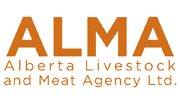Grazing Alfalfa More Safely
| Project Code: | FRG.02.09 |
| Completed: | 2013 |
Project Title:
Development and establishment of improved sainfoin varieties
Researchers:
Dr. Surya N. Acharya (AAFC Lethbridge) acharyas@agr.gc.ca
Dr. Tim McAllister (AAFC Lethbridge), Dr. Alan Iwaasa (AAFC Swift Current), Dr. Bruce Coulman (University of Saskatchewan), Dr. Yuxi Wang (AAFC Lethbridge), and Dr. Bjorn Berg (Alberta Agriculuture and Forestry)
Background:
Alfalfa and other legumes help restore soil nitrogen, increase forage yields and extend pasture carrying capacity. Alfalfa can also help to increase average daily gain of grazing animals. The risk of bloat when grazing pure alfalfa stands can be reduced through the selection of reduced bloat varieties (e.g. AC Grazeland), careful grazing management and the use of Bloat-Guard, the Rumensin CRC bolus, or the recently reintroduced Alfasure. Many producers prefer to seed alfalfa-grass mixtures instead. This reduces the risk of bloat, but the alfalfa usually disappears from the stand over time and takes the fertility benefit with it.
Sainfoin is a legume that does not cause bloat. Sainfoin is said to be as nutritious and palatable as alfalfa, more cold and drought tolerant, and can grow in alkaline soils. However, sainfoin doesn’t yield quite as well as alfalfa, and it doesn’t regrow as quickly after grazing or cutting. This causes two problems. First, the regrowth will contain more alfalfa than sainfoin, which increases the bloat risk. Second, the sainfoin will be outcompeted and disappear from the stand over time, leaving only alfalfa.
Four sainfoin populations with improved growth patterns and yields resembling alfalfa have been developed under competition with alfalfa at the AAFC Lethbridge Research Centre. These populations need to be evaluated under grazing in different environments.
${pagebreak}
Objective:
Evaluate persistence, forage yield, quality and palatability, regrowth pattern and tannin content of new sainfoin varieties under grazing when grown alone or together with alfalfa.
What they did:
Researchers conducted large plot grazing trials at Lethbridge AB, Saskatoon SK, and Swift Current SK. Three experimental sainfoin populations were compared to the sainfoin cultivar Nova in 50/50 mixtures with AC Blue J alfalfa. Animal performance, condition, bloat incidence, and methane emissions were tested in addition to sainfoin persistence, forage yield, quality, and tannin content.
Plots were established in 2008 and studied over the next three years. The Lethbridge plots were irrigated, and the Saskatchewan sites were rain fed. A fourth site was established near Humboldt, Saskatchewan but limited results are available because establishment and weed problems resulted in reseeding.
What they Learned:
Yields were highest in Lethbridge, intermediate in Saskatoon, and lowest in Swift Current due to moisture conditions. All four combinations of sainfoin and alfalfa always yielded as well as AC Grazeland alone. Including sainfoin in the legume mix did not reduce yields compared to Grazeland alfalfa on its own.
Persistence was better in the new sainfoins. Results varied a bit among sites; the amount of forage coming from sainfoin (vs. alfalfa) across the three years of the trial increased in some locations, decreased in others, and sometimes stayed the same. In Lethbridge (where growing conditions were best) the new sainfoins dropped from 50% of the forage in 2009 to roughly 25% in 2011, while Nova dropped to 7%. All of the sainfoins did better at the other locations, but the new sainfoins consistently persisted better than Nova. When seeded with alfalfa, the new sainfoins should be able to provide bloat protection for more growing seasons than current varieties.
Regrowth was reported for three cuts taken at the Saskatoon site in 2011. In the Nova+Grazeland plots, a quarter of the forage came from sainfoin at the first cut, but only about 10% of the forage was from sainfoin at the second and third cuts. This means that the alfalfa grew back faster than the sainfoin. The three new sainfoins all had better regrowth than Nova, providing at least 20% and sometimes half of the total forage harvested at the second and third cuts. This is important because at least 15% sainfoin needs to be present in the alfalfa stand to avoid bloat. Compared to current varieties, the new sainfoins should regrow faster and provide better bloat prevention when grown with alfalfa.
What it means:
One of these new sainfoins has been named “Mountain View”, which is now available to Canadian producers through Northstar Seeds. Canadian beef producers now have a valuable tool to improve pasture productivity, animal performance and soil fertility with a lot fewer bloat concerns.









